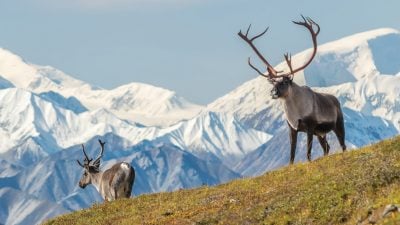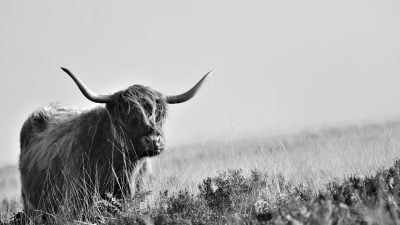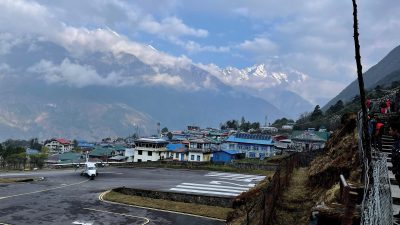Home / Latin America & Antarctica / Four Reasons to Consider an An…
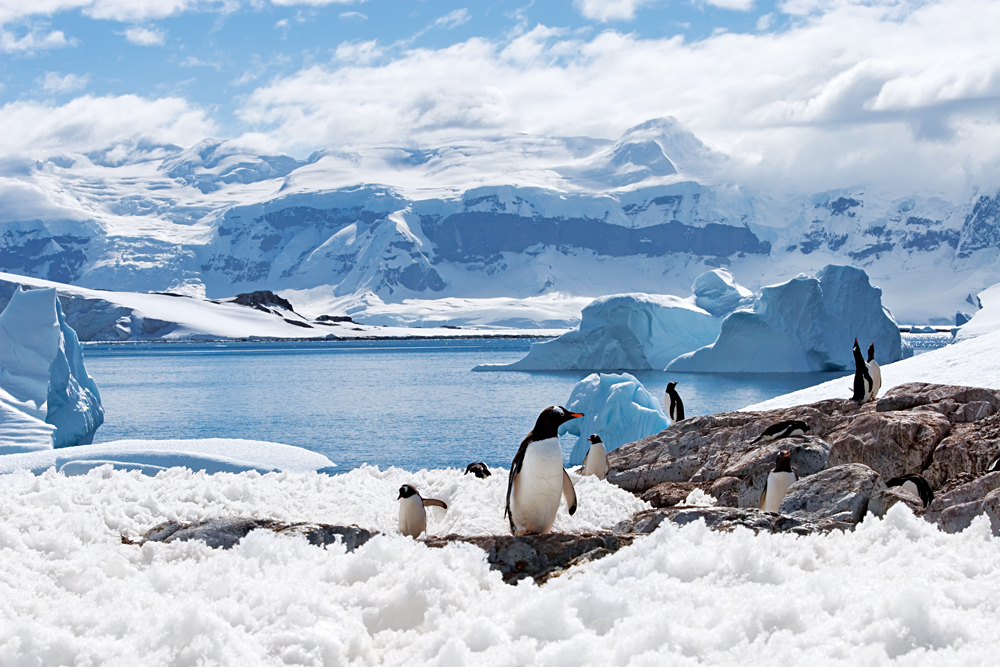
Four Reasons to Consider an Antarctica Vacation
The world is more connected than ever before. Thousands of international flights crisscross the globe daily, connecting Globetrotters with the destinations they’ve dreamed of visiting their entire lives. In the past 50 years, the idea of an unattainable destination has essentially disappeared. Save dangerous outliers like North Korea and Syria, the world is accessible and ready to explore. There are few frontiers left on this earth, and one of those remaining frontiers is a massive, uninhabited continent at the southernmost pole of the planet – Antarctica. An Antarctica vacation is a great way to explore this most remote part of the world.
If you’re hungry for real adventure and a taste of the farthest reaches of the planet, consider Antarctica as your next destination. A trip to Antarctica is one of the few remaining adventures into the unknown you can have on this increasingly-globalized world of ours.
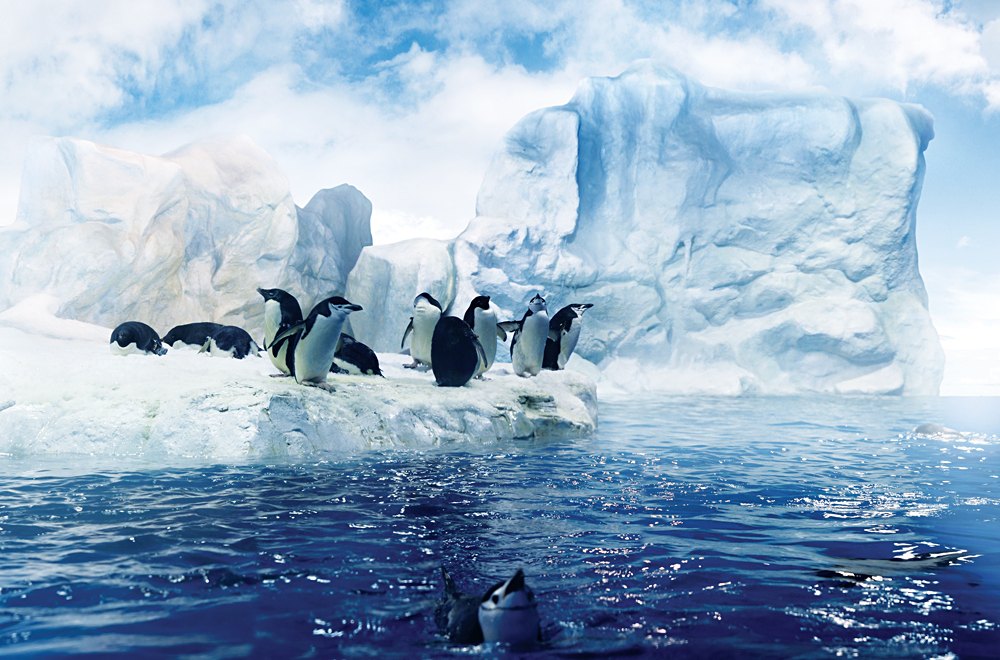
You Will Experience a Landscape like No Other on the Planet
It’s hard to overemphasize how unique Antarctica is, but unless you’re travelling to the moon sometime in the near future, you will never visit a place like Antarctica in your lifetime. The seventh continent is one-of-a-kind, a giant ice desert that’s colder, drier, and emptier than anywhere else on earth. No people live here, aside from the scientists who study it during missions to the few research bases that populate it. It’s roughly twice the size of Australia and the emptiness is staggering.
As you’ll discover on your Antarctica vacation, there are no endemic land animals of significant size here; no indigenous population of humans ever called it home. Much of the continent is 3,000 metres above sea level, making its average elevation more similar to the elevation of China or Greenland than Canada or the United States. Almost 98 percent of the continent is covered in ice, which accounts for around 90 percent of the world’s ice, and that ice is at least 1.6 kilometres thick in most spots. That ice also accounts for almost 70 percent of the world’s freshwater, which is a remarkable fact, since it means that the vast majority of drinkable water remains frozen at the bottom of the planet.
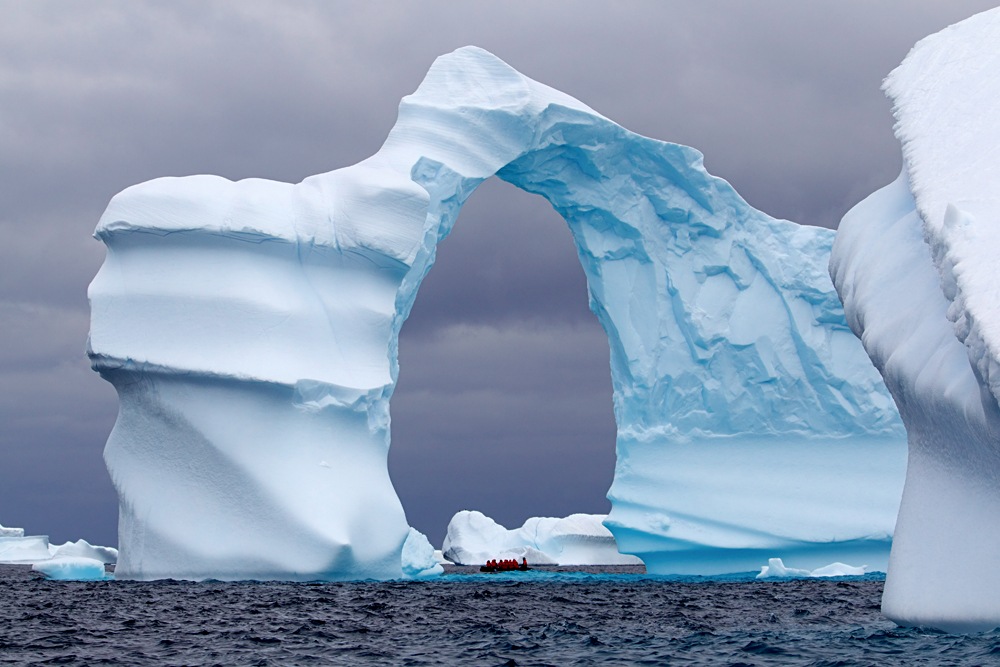
That Antarctica is icy should come as no surprise. What is perhaps surprising, however, is that much of the continent is covered in volcanoes. As well, there are many lakes that exist beneath the ice sheet that covers the continent, insulated from the elements by the layers of ice. You can only visit Antarctica in the spring and summer months between November and March, as the ocean ice is impenetrable throughout the rest of the year. During this part of the year, Antarctica experiences 24 hours of daylight every day, so be sure to pack some powerful sunglasses if you’re heading there on a trip. Also be sure to wear sunscreen as sunburns are common here, the UV rays reflect off the uniform whiteness of the ice and snow and onto your body, doubling the effects of the sunlight. Unfortunately, because of the constant sunlight, you won’t see the Aurora Australis or Southern Lights, which glow in the sky when temperatures dip and solar flares ignite the atoms in the atmosphere.
If you head to Antarctica, you’ll explore this landscape that is unlike any other on the planet. You’ll have the opportunity to withstand frigid temperatures, survey empty landscapes, and experience its unique blend of tranquil silence and robust wilderness for yourself. Only after visiting will you truly comprehend what makes this continent so unique and incredible.

You Will Engage with a Fascinating History
If you’re imminently heading on an Antarctica vacation, it’s likely you already know about its storied history of adventure and tragedy. However, some refreshers for the rest of us…
Antarctica is the world’s seventh continent, but it is not a country. Although many countries lay simultaneous claim to sections of its landmass, the entire continent is not owned by any one country and access is shared between all claimants through an international treaty.

While today, almost all humans in Antarctica are scientists stationed there for research, in the past the continent was only traversed by the most daring explorers on the planet. There is no evidence of humans being aware of the continent prior to the 19th century, although scientists had always speculated about the existence of a massive landmass near the planet’s southern pole. However, many people assumed this landmass was Australia, which gave Australia its name. (“Australia” is derived from “australis,” meaning “southern.”)
The first recorded sightings of Antarctica took place in 1820, while the first recorded landing didn’t occur until 1895. (There are claims of a landing in 1821, but these have been disputed.) The most famous excursions to the continent began in 1907 and lasted through 1917. First, the Nimrod Expedition, under Ernest Shackleton, led a party of explorers to within the circle of the Magnetic South Pole. In 1911, Roald Amundsen went even further, reaching the Geographic South Pole. Later that same year, Robert Falcon Scott also led an expedition to the Geographic South Pole, although his team succumbed to the extreme weather conditions of the continent shortly after reaching the pole. The golden age of Antarctic exploration ended with Shackleton’s second expedition aboard the Endurance, which ended in the ship getting trapped in the ice of the Weddell Sea and a miraculous rescue of his men on Elephant Island.
While the main appeal of Antarctica is the wilderness, a trip to Antarctica also lets you join an esteemed cadre of individuals to have crossed the Drake Passage and set foot on Antarctic soil (or ice, rather). If you happen to visit Cape Royds, you can even visit Shackleton’s hut, which he used during his 1907 expedition. The hut is remarkably preserved due to the frigid conditions, looking like it was used merely a year ago and not over a century ago. You can even see canned foods on the shelves and Shackleton’s jacket hanging from the wall. It’ll be like you walked through a door and travelled 100 years back in time.

Get Up Close to Penguins in their Natural Habitat
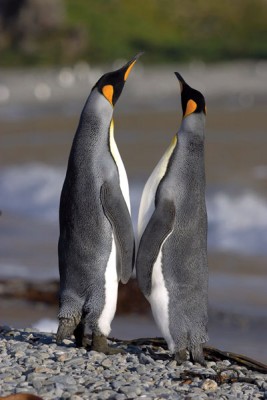
If I’m being honest, the reason Antarctica has always held a special place in my dreams has been because of penguins. And as the worldwide phenomenon that was March of the Penguins, much of the world shares my adoration for these flightless birds. The chance to see penguins on an Antarctica vacation cannot be passed over. Sure, you can see them in South America and South Africa, as well as some coastal regions of the South Pacific, like in Tasmania. But seeing a penguin amidst the icy landscape and frigid temperatures of Antarctic feels right. It’s their ideal backdrop and the only place you can see the mighty emperor penguins, the most iconic and largest species of penguin.
The emperor penguin is the only animal to breed during the Antarctic winter, making it the most robust creature to live on the continent. However, it is not alone in calling the South Pole its home. In addition to emperor penguins, you can see Adelie, rockhopper, king, chinstrap, and Gentoo penguins, depending on where you visit. If you head to Petermann Island on the Antarctic Peninsula, you can see a Gentoo penguin colony and perhaps even pick up one of these little penguins, as they’re completely unafraid of humans.
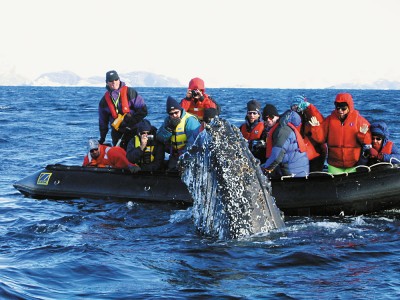
Apart from penguins, Antarctica’s most abundant life is found in the ocean. Some nesting birds can be found here, such as albatross, petrels, and turns, although none of these birds actually nest on the mainland. Various seals, such as elephant seals, fur seals, leopard seals, and Weddell seals call the waters home (and feed on the penguins that share the landscape, too). The waters are also home to blue whales, orcas, colossal squids, and billions upon billions of Antarctic krill that drive the ecosystem by providing the main food source. There are over 235 marine species that inhabit the waters, including terrifying sea spiders that can grow up to the size of a human hand (I don’t think I’d want to come across one of these during an Antarctic scuba session.)
If you explore the waters on an Antarctic vacation, you’ll find plenty of sea life to keep you company. However, traversing the land will reveal little more than penguins and seals. There are no land mammals, reptiles, or amphibians that call Antarctica home and the largest land animal endemic to the continent is the flightless midge, an insect that’s only half-a-centimetre long. These bugs are interesting, but probably won’t afford the sorts of photography opportunities you’re looking for on a trip to Antarctica. Best stick to selfies with penguins and seals.

Have a Winter Adventure like No Other
Aside from encountering penguins and seals and sharing the waters with blue whales and orcas, you can expect to find some heart-pounding adventure on an excursion to the South Pole. The frigid temperature and abundance of ice and snow means that you’re in for a treat if you love winter activities. You can spend your days ice climbing mountains, trekking across landscapes in search of penguin nesting grounds or merely strolling to appreciate the seemingly-endless kilometres of barren landscape. You can take to the water by kayak to paddle alongside migrating humpback whales or blue whales, if you’re lucky.
If cold temperatures don’t scare you, go scuba diving in the Antarctic waters to see penguins slice through the water or to stare up at the belly of an elephant seal from beneath the waves. Go one step further and take a Polar Plunge into the icy waters, getting your heart pumping in ways that only Icelanders or Finns are used to on a regular basis. If you’re more inclined to stay in your parka and take advantage of the incredible photo opportunities, opt for a zodiac excursion along the waters and head up to calving icebergs to capture their ice chunks falling into the sea.
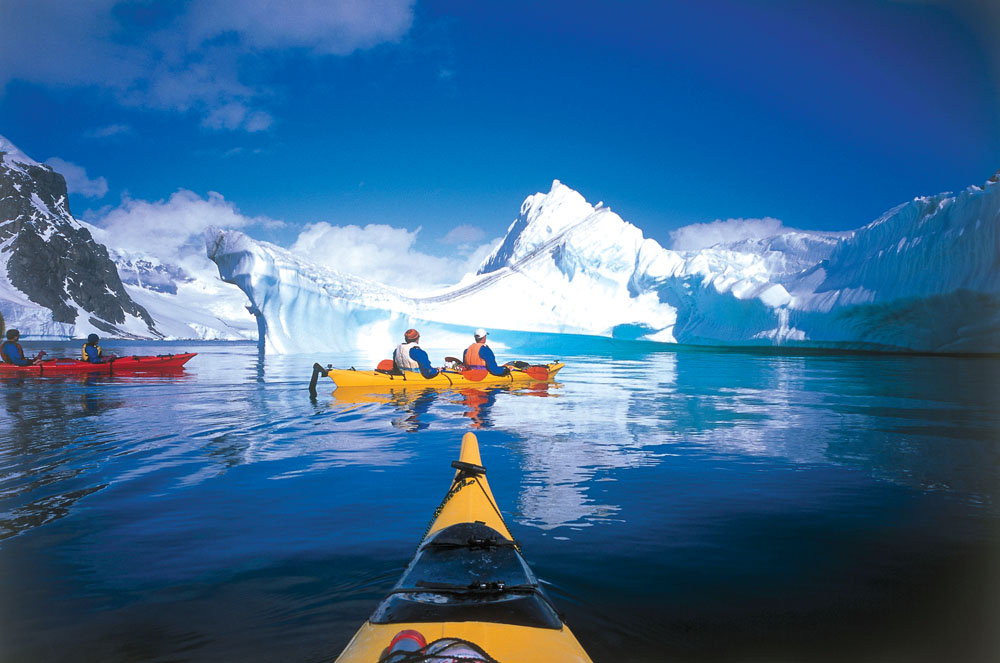
Another unique photography opportunity would be visiting Blood Falls, an icy waterfall on Lake Bonney that seems to gush blood-red water. The salty water lied frozen in the ice sheet for millions of years, building up its iron content. When the water is finally exposed to oxygen, it essentially rusts, turning a bright red as it spills down the ice.
The very passage overseas to Antarctica is an adventure in itself. Many people opt to fly directly into one of the research stations, but the more daring Globetrotters (and those more obsessed with authenticity) will relish the opportunity to cruise the stormy Antarctic seas on their way to the continent. The Drake Passage is the calmest of the ocean routes to Antarctica, but it is only calm in the most relative sense. The Drake Passage still contains some of the roughest ocean in the world and storms are frequent. Experiencing a rollicking icebreaker on your way to the south, imagining you’re Shackleton on the Endurance as it passed through the icy waters in the spring of 1914, is a thrilling experience.
Suggested Itinerary:
14-Day Cruising Antarctica Crossing the Circle Sea Adventurer: Buenos Aires to Ushuaia
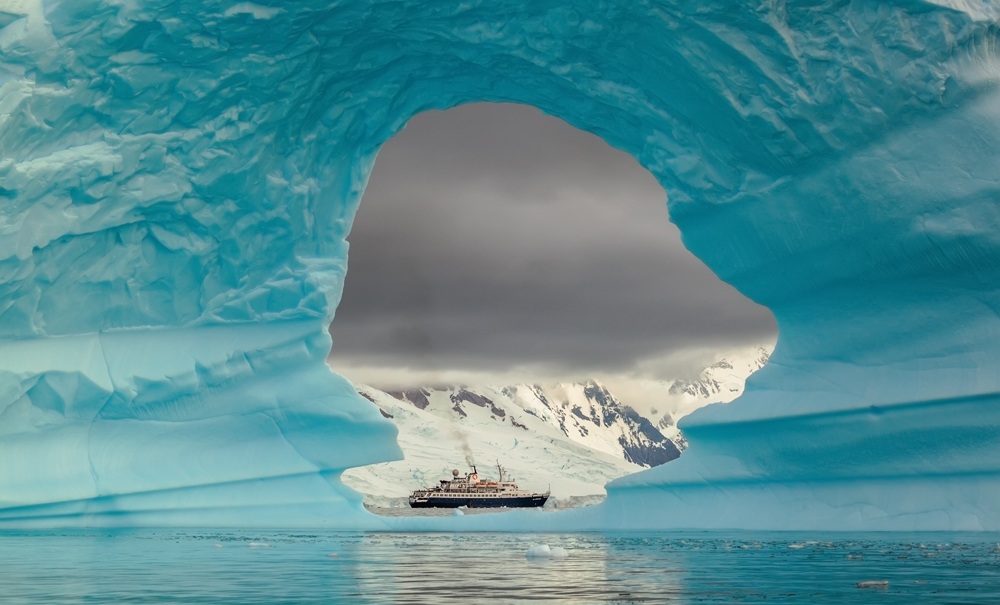
Regardless of what brings you to Antarctica, you’ll discover a continent that is full of excitement at every turn. It’s the sort of place where you can truly experience the frontier, a world untouched by civilization and the domination of humankind. Head on an Antarctica vacation to unleash your inner explorer. You’ll brave the ice and the cold and win the day, experiencing the adventure of a lifetime.
Get more travel inspiration by email.
Subscribe
0 Comments

Get the latest travel trends & hear about the best deals on vacations around the world.
If you’re a Globetrotter, these are the newsletters for you!
